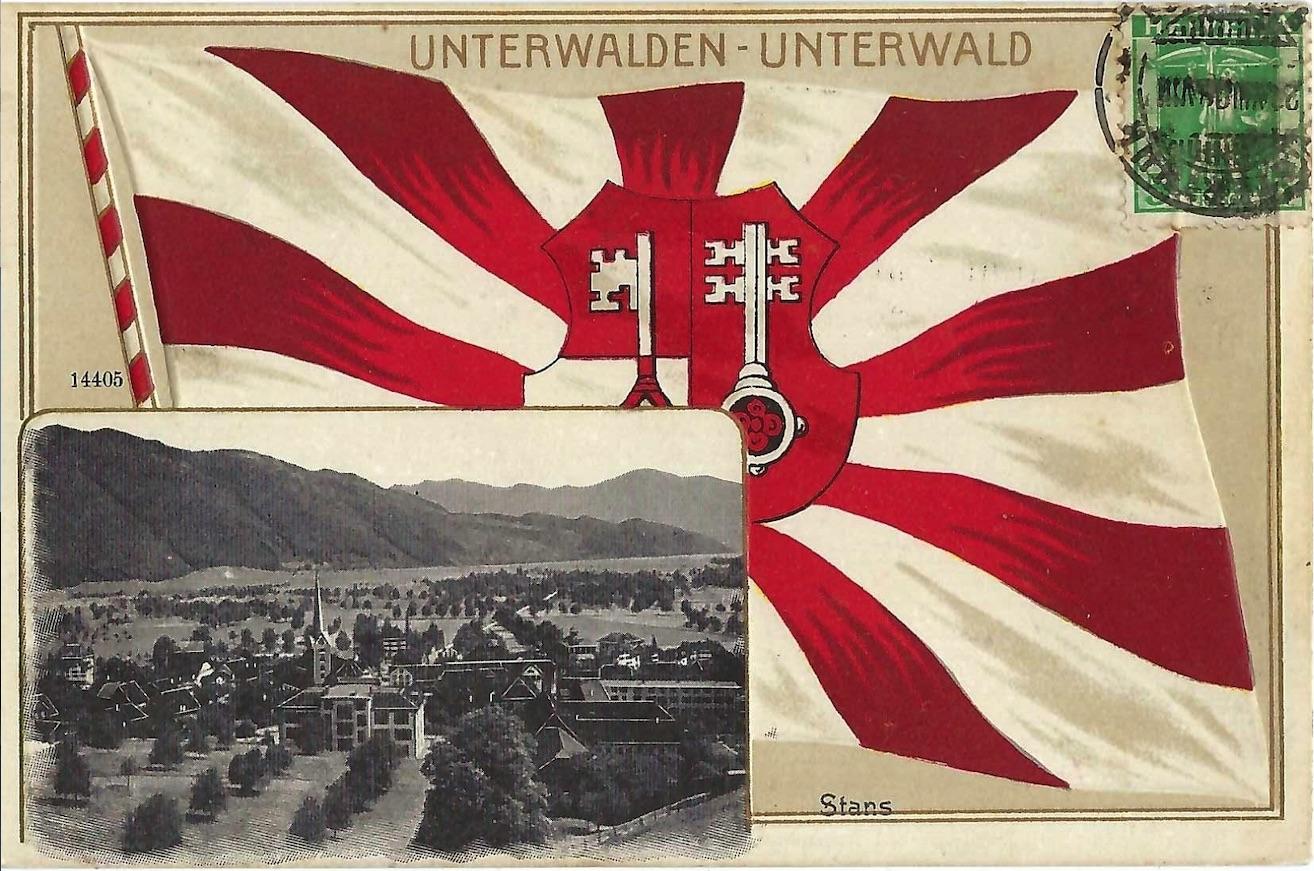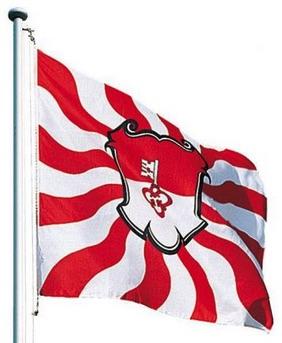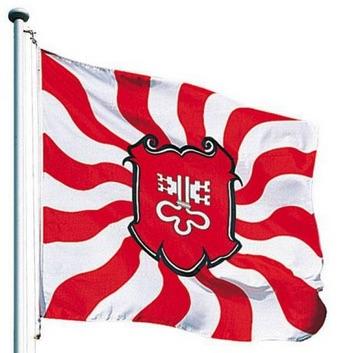![[Flag of Unterwalden]](../images/c/ch-uw.gif) image by António Martins
image by António Martins

Last modified: 2025-07-12 by martin karner
Keywords: switzerland | unterwalden | german |
Links: FOTW homepage |
search |
disclaimer and copyright |
write us |
mirrors
Description of the Flag
Left (Obwalden): Per fess gules and argent, overall a key in pale ward up
countercoloured.
Divided horizontally into equal parts, the upper red and the lower
white, with superimposed a key white in the red part of the field and
red in the white part of the field with its ward turned toward the
hoist.
Right (Nidwalden): Gules, a double-key in pale ward up and addorsed argent.
On a red field, a white upright key with two shanks facing outwards
and connected to one grip.
The style of the keys can vary on any given flag. Originally the
grip of the Nidwalden key was always lozenge-shaped, called a
Kraepfligriff (as shown in the FOTW version). The combined Canton
flag and arms (as in the FOTW version) shows the two whole ones
impaled, i.e. divided vertically with Obwalden in the hoist and
Nidwalden in the fly. During the 17th and 18th centuries the
combined Unterwalden shield consisted of the Nidwalden double-key on
the red and white field of Obwalden.
T.F. Mills, 16 October 1997
Symbolism of the Flag
The keys are the emblem of St. Peter, the patron saint of the parish
church of Stans, the capital of Nidwalden and the whole of
Unterwalden. The red and white colours are thought to come from the
personal standard of the Holy Roman Emperor (a white cross on a red
field). The colours had the usual Biblical symbolism of blood,
passion, sacrifice (red) and purity, chastity, cleansing, hope
(white).
T.F. Mills, 16 October 1997
T.F. Mills, 16 October 1997
Since the adoption of the new Constitution in 1999, there isn't
anymore any "half-canton". The effective difference between a full and a half
canton is the fact that a "half-canton" has only one representative in the
Swiss States Council while the other cantons have two.
In the new Constitution, the old "half-cantons" are listed as those
cantons that have only one representative (Basel-Stadt, Baselland, Appenzell
Innerrhoden, Appenzell Ausserrhoden, Nidwalden and Obwalden).
Pascal Prince, 24 August 2007
In fact the term "half-canton" (or semi-canton) was never in the Swiss Constitution (although it was
used in official documents and legislative texts). The only thing that changed in 1999 was that the
half-cantons were now called cantons, even officially. However, the actual status of these cantons has not
changed since 1848 (the new federal state). Although only represented with one vote in the State Chamber
(Ständerat), they always had the same status as a full canton. Regardless of this, the term "half-canton"
is used unchanged in the population and in the geographical and cultural context (i.e. also in
vexillology).
The common flag depicted here has only a cultural (and sometimes military) meaning, but no political one.
Since the partition there has been no political entity named "Unterwalden canton" or
"State of Unterwalden" (This also applies to the other "common flags" of the half-cantons, see Appenzell
and Basel).
Martin Karner, 11 January 2023
The concept of half-cantons is indeed somewhat strange and only understandable against the backgound of
Swiss history. As T.F. Mills mentions above, the divided cantons have a past when they weren't divided. The causes of
partition were different. In the case of Unterwalden they aren't known exactly,
the geografy which separates those two lands in two parts may have been one of the reasons.
The other states/cantons didn't accept that the new formed cantons had each two representatives in the
Assembly of the Confederation (Tagsatzung) because that would have doubled their weight in comparison to
the situation before the partition. Therefore the new cantons had to limit themselves to send only one
delegate each to the Assembly. So the old balance of power was maintained. Thus came the notation
"half-canton", it's referring only to the half representation in the Assembly (today: Council of States,
Ständerat) but not to their status as a full member of the Confederation.
Martin Karner, 11 January 2023
"Unter" in "Unterwalden" is not the opposite of "Ober" (upper, over), but comes
from inter (Latin: between). In the Late Middle Ages the name in Latin was Inter Silvas
(between the woods). –
Obwalden had for a long time the right to represent both Ob- and Nidwalden with its flag and arms, when
there was only space for one emblem (on a flag or picture). When they went to war together, the
Nidwaldners had to case their colours in favour of the Obwalden banners.
Martin Karner, 26 November 2023
![[Original Kraepfligriff flag]](../images/c/ch-uw2.gif) image
by António Martins
image
by António Martins
Original Kräpfligriff (Nidwalden's key grip).
![[Pre-1816 Nidwalden flag]](../images/c/ch-uw3.gif) image by António Martins
image by António Martins
Pre-1816 Nidwalden key on red-white.
![[Pre-1816 Nidwalden flag]](../images/c/ch-uw4.gif) image by António Martins
image by António Martins
Pre-1816 Nidwalden key on white-red.
![[Colour Flag UW]](../images/c/ch-uw_56.gif) image
by Ole Andersen
image
by Ole Andersen
Simple rectangular cantonal flag, as shown in Kannik (1956). Common for both
half-cantons [So-called
colour flag (Farbenfahne in German)].
Ole Andersen, 4 August 2002


 images located by Martin Karner
images located by Martin KarnerAt the beginning of the 20th century, flamed flags were still in use, with the white cross replaced by
a (baroque) shield in the centre of the flag. These decorative flags had been used until WWII and then
somewhat forgotten in preference of the current cantonal flags. [Today they are being
produced again, see images on the right]
Pascal Gross, 30 June 2002
See also:




